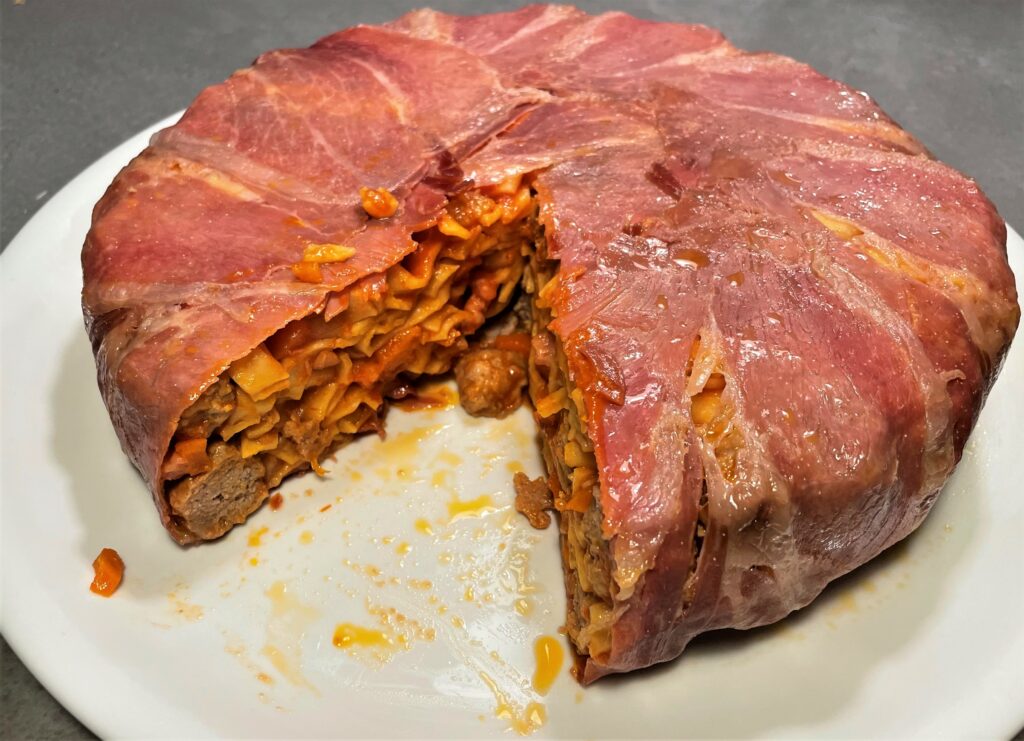Timballo di Bonifacio VIII
Pie for Pope Boniface VIII
The history of the Timbale di Bonifacio VIII is long, but is worth the story.
Bonifacio VIII of Anagni sat on St Peter’s throne from 1294 to 1303, according to rumour after he had convinced his hapless predecessor, Celestine V, to resign (the last to do so before Benedict XVI) by whispering through a tube that connected with his room and pretending to be God. Dante took great delight putting him in the eighth ring of the Inferno.
Bonifacio is also remembered for the schiaffo di Anagni. Having claimed more temporal powers for himself than any pope had ever dared before, he fell afoul of secular rulers, notably King Philip IV of France and Sciarra Colonna, scion of one of the most powerful Roman families. When they demanded his resignation, Bonifacio took refuge in his native town of Anagni, Colonna on his trail with an army. As the Pope sat in his palace, awaiting certain death, Colonna strode in calmly, walked up to the papal throne, gave Boniface a resounding slap (schiaffo) on the face, turned and left. Mortified, the pope died a month later.
Ingredients
4 persons (main dish)
Cooking time : 1 hr
- 400 g of fresh fettuccine
- 300 g minced veal
- 500 g tomato puree
- 4 tablespoons of grated
- 4 tablespoons of parmesan cheese (+ a bit for final topping)
- 1 stalk of celery
- 1 carrot
- 1 onion
- 2 tablespoons of oil extra virgin olive oil
- 2 slices of guanciale(alternatively pancetta or bacon)
- 12-14 slices of parma ham or other cured ham
- salt and pepper

Prepare the meatballs, mixing well the ground meat with a good pinch of salt, pepper and most of the Parmesan. Roll small meatballs of the size of olives. Keep them aside.
Pour a gentle splash of olive oil in a large pan and heat to medium, and fry the finely chopped celery, carrot and onion without browning them
Dice the guanciale and to the mix and stir for a few minutes.
Add the meat balls and brown them well. Be carefull w the heat, the onion must not get browned.
Add inn the tomato puree, a pinch of salt and leave to cook for half an hour.
Then boil the fettuccine in plenty of salted water according to the package instructions – usually only a few minutes if fresh pasta is used.
Coat the inside of a greased 12 cm springform pan with the parma ham, leaving part of the slizes hanging on the outer part of the spring form.
Once the pasta is ready, drain it and mix it with the sauce.
Pour everything into the mold covered with ham, top with a handfull of Parmesan spread out evenly, and close the outer part of the slices inwards,and close the ‘top with a slize or two of parma ham, making a totally parma ham covered dish.
Put the spring form into the oven at 200C for 10-15 minutes.
Put the spring form upside dowm on a large serving platter, and remove the spring form and serve to popes and commoners.
